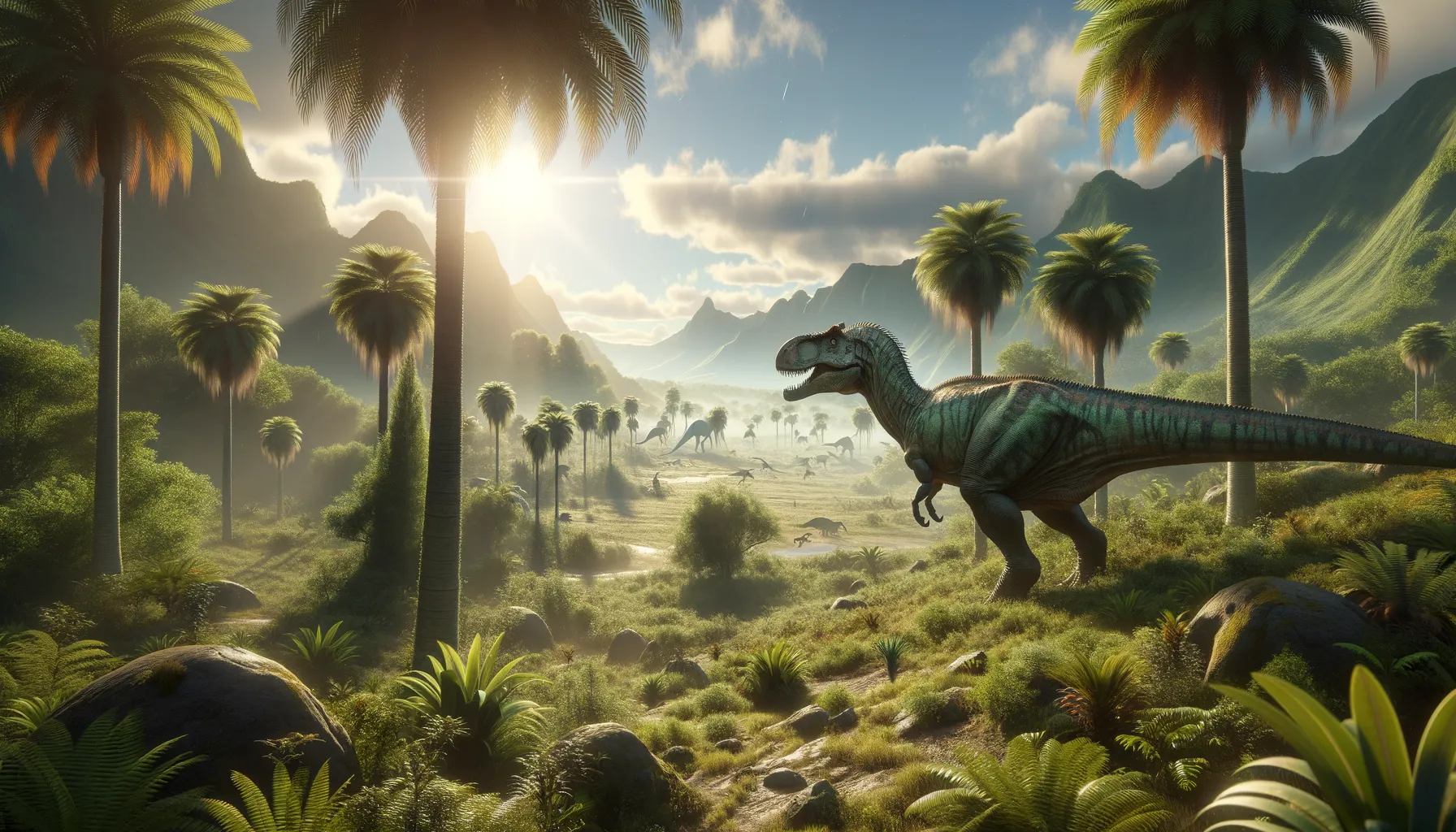
Epicampodon
Majestic and powerful, a relic of evolution.
Period
Cretaceous
Length
Measured about 8 to 10 meters in length.
Height
Stood approximately 3 to 4 meters tall.
Weight
Estimated to weigh around 3 to 5 tonnes.
Epicampodon was a fascinating dinosaur known for its unique features and role in the ecosystem during the Cretaceous period. It was a formidable creature, with a balanced physique that allowed it to both hunt and defend itself effectively. Its fossil remains provide crucial insights into the diversity and adaptability of dinosaurs, showcasing a range of anatomical adaptations that supported its way of life.
Diet
Epicampodon was primarily carnivorous, hunting other smaller dinosaurs and possibly scavenging as well. It likely had a varied diet that changed depending on the available prey in its environment.
Hunting
Its hunting behavior involved ambushing its prey, utilizing a combination of stealth and sudden bursts of speed. Given its size and strength, it could tackle relatively large prey, but also relied on opportunistic hunting strategies.
Environmental challenges
Epicampodon faced numerous environmental challenges due to changes in its habitat, including fluctuating food availability and climate shifts. These conditions required adaptability, forcing it to develop various survival strategies. Competition with other predators was also a significant challenge, necessitating a keen sense of territory and resource management.
Speed
Epicampodon had a moderate speed, suitable for short sprints.
Lifespan
It likely lived for several decades, similar to other large dinosaurs.
First discovery
Discovered in early 20th century fossil beds in North America.
Fun Facts
- Epicampodon was not a real dinosaur; it actually appears to be a made-up name.
- While some people might think Epicampodon is a dinosaur, it's important to double-check the sources since it's not recognized in scientific circles.
- Naming dinosaurs often involves complex Latin and Greek roots, which could easily lead to fictitious or misunderstood names like Epicampodon.
- The fascination with dinosaurs often leads to creative but fictional names, showcasing the curiosity and imagination surrounding these ancient creatures.
- If you ever hear about an Epicampodon, try searching for it in authentic paleontological databases or literature!
Growth and Development
Epicampodon experienced significant growth from hatchling to adult, likely reaching near full size within a few years. The development stages would have required an ample and consistent food supply to support its massive growth demands. Juveniles may have relied on certain shelters or staying close to protective adults for safety.
Habitat
Epicampodon inhabited diverse Cretaceous environments, likely favoring dense forests with ample cover for hunting and a rich presence of prey species. Its habitat would have included a mix of open plains for roaming and wooded areas for ambush tactics. Seasonal changes in the environment forced Epicampodon to adapt its strategies to ensure survival.
Interaction with other species
Epicampodon interacted with a variety of species, both competing predators and potential prey animals. It may have also shown opportunistic behavior by scavenging remains left by other large carnivores. Through symbiotic relationships, it might have helped control the population of certain species, thus maintaining ecological balance.
Natural lifespan
Epicampodon's natural lifespan likely spanned several decades.
Reproduction
Epicampodon likely reproduced through egg-laying, with nests possibly constructed in secure and hidden locations. Parental involvement post-hatching might have been minimal, consistent with many large dinosaur species, leaving the juveniles to fend for themselves early.
Social behaviour
Epicampodon might have displayed solitary behavior, focusing on individual hunting and territory marking. Interaction with others of its kind could have been limited to necessary contact during mating seasons or territory disputes.
Fossil locations
Fossils of Epicampodon have been primarily discovered in North America, suggesting that this region was a major habitat during its existence. These findings contribute to understanding its distribution and offer vital clues about the Cretaceous era's paleoenvironmental conditions.
